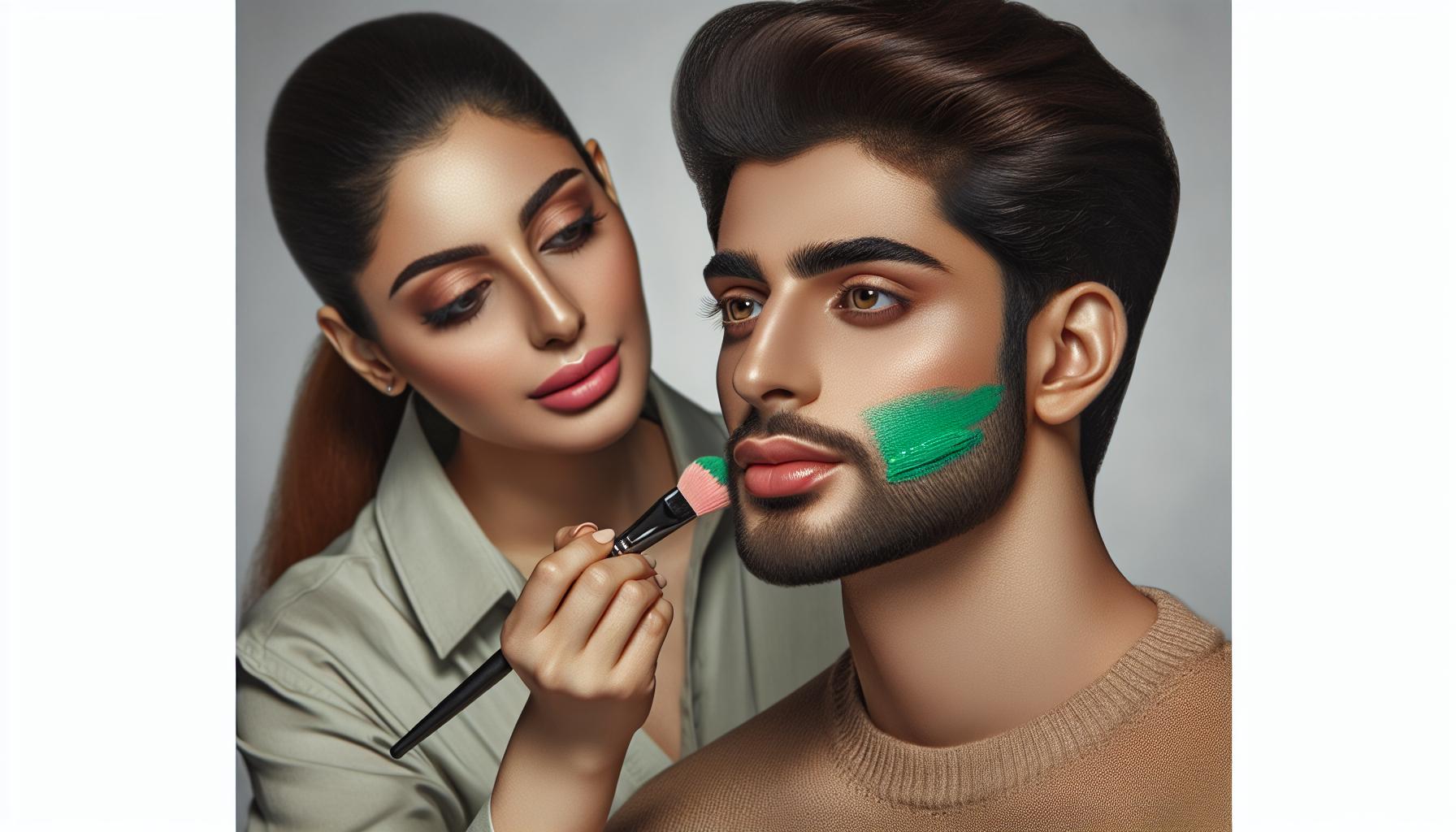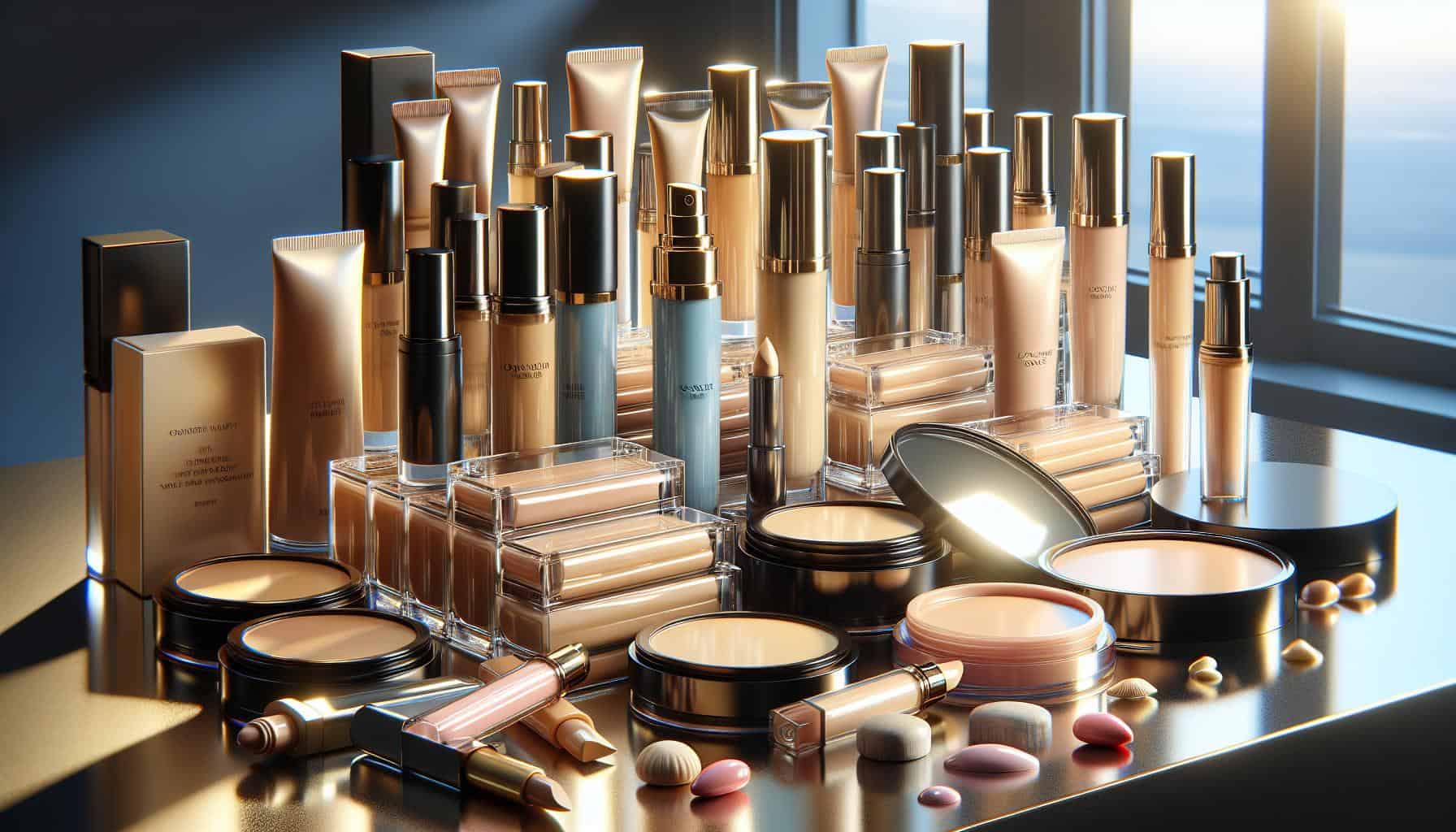Best Concealers for Redness: Hydrating Picks for Dry Skin
Understanding color correction
When tackling redness on your face, knowing a bit about color correction can be a game-changer. Color correction isn’t just about applying layers of makeup; it’s a technique that uses complementary colors to cancel out discolorations on your skin.
Green concealers are your best bet for neutralizing red areas, thanks to their position opposite red on the color wheel. But it’s not just about selecting green; the shade of green is crucial too. Lighter greens work well for mild redness, while darker greens are better for more intense red areas.
“The secret of color correction lies in using the opposite color on the color wheel to neutralize unwanted hues.”
Here’s a quick guide to help you understand what colors work for other types of discolorations:
| Discoloration | Concealer Color |
|---|---|
| Redness | Green |
| Dark Circles | Peach/Orange |
| Sallowness | Lavender |
| Dullness | Yellow |
Remember, applying color correctors requires a light hand. It’s essential to blend well and layer your regular concealer and foundation on top for a flawless finish.
Experiment with different formulas and textures to find what works best for your skin type and concern. Whether you prefer a liquid for its blendability or a stick for its precision, the right product can make all the difference.
The science behind green concealers

When you’re faced with redness on your skin, reaching for a green concealer might seem unconventional at first. But, there’s a solid scientific basis for why this color can be your best ally in achieving a flawless complexion. It all boils down to color theory.
Color theory is a principle that guides the use of colors in art and design, but it’s also incredibly applicable to makeup. On the color wheel, green sits directly opposite red, which means these two colors can neutralize each other when applied together on the skin. This is why a green concealer is so effective at reducing the appearance of redness, whether it’s from acne, rosacea, or any skin irritation.
| Color | Neutralizes |
|---------|--------------|
| Green | Red |
| Yellow | Purple |
| Orange | Blue |
Choosing the right shade of green is crucial. A pale, mint green is typically most effective for light to medium skin tones, while a slightly darker green may work better for those with a deeper complexion. Regardless of your skin tone, the key to using green concealer is in the application.
“Blend, blend, blend – the secret to using color correctors effectively is all in the blending,” says a makeup artist.
After applying the green concealer to red areas, always layer it with your regular concealer or foundation. This two-step process ensures that the redness is neutralized without leaving any trace of green behind. Experimenting with different formulas and textures—from liquids to creams—can also help you achieve the best results for your skin type and concerns. Remember, a little goes a long way when it comes to color-correcting products.
Choosing the right concealer for your skin type
Finding the perfect concealer isn’t just about tackling redness; it’s also crucial to pick one that matches your skin type. Whether you struggle with oily, dry, or combination skin, there’s a concealer out there that’s tailored just for you.
For those with oily skin, look for mattifying concealers that promise long-lasting wear without caking or smudging. Products labeled as “non-comedogenic” are your best bets, as they’re less likely to clog pores.
If you have dry skin, a hydrating concealer can be a game-changer, providing moisture while covering imperfections. Look for creamy formulas enriched with hydrating ingredients like hyaluronic acid or vitamins E and C.
People with combination skin might need to experiment a bit more to find their holy grail product. A balanced formula that’s not too drying nor too oily is key.
To help you make an informed decision, here’s a quick reference table:
| Skin Type | Concealer Type | Ingredients to Look For |
|---|---|---|
| Oily | Matte, Oil-free | Salicylic Acid, Silicone |
| Dry | Hydrating, Creamy | Hyaluronic Acid, Vitamins E & C |
| Combination | Balanced | A mix of mattifying and hydrating elements |
Pro Tip: Always patch test a new concealer on your jawline to ensure it not only matches your skin tone but also reacts well with your skin type.
Remember, a concealer’s effectiveness isn’t just rooted in its color-correcting abilities but also in how well it meshes with the unique needs of your skin. Whether you’re dealing with the occasional pimple or chronic redness, taking your skin type into account ensures you’re not just covering up issues but also treating your skin with the care it deserves.
Concealers for sensitive skin
When you’ve got sensitive skin, picking the right concealer isn’t just about the color. It’s about finding makeup that won’t irritate your skin or cause flare-ups. Fortunately, makeup brands understand this struggle and have developed products specially designed for skin types that require a gentle touch.
Key Ingredients to Look For
Sensitive skin thrives on gentle formulations. Here’s what you should look for:
- Hyaluronic Acid: Hydrates without causing irritation.
- Niacinamide: Reduces redness and soothes the skin.
- Mineral-Based Ingredients: Less likely to cause allergic reactions.
“Your skin deserves gentle care. Choose concealers with skin-loving ingredients for the best results.”
Recommendations for Sensitive Skin
Finding the right concealer for sensitive skin can be a hassle, but we’ve got you covered. Look for non-comedogenic, fragrance-free, and hypoallergenic products to minimize the risk of irritation. Check the labels for these terms to ensure you’re getting a product that’s as gentle as possible.
Compatibility Chart
To help you decide, here’s a quick reference chart:
| Skin Concern | Recommended Concealer Feature |
|---|---|
| Acne-Prone | Oil-free, salicylic acid |
| Very Dry Skin | Hydrating, contains hyaluronic acid |
| Redness & Rosacea | Green tint, niacinamide |
Remember, while color correction is essential for hiding redness, ensuring that the product won’t exacerbate your skin’s condition is just as crucial. Patch testing a small amount on your jawline before applying it to your entire face is a wise move to ensure compatibility.
Concealers for oily skin
Choosing the right concealer if you’ve got oily skin can feel like navigating a minefield. But worry not, with a little know-how, you’ll find the perfect match to keep that unwanted shine at bay and cover redness effectively.
Oily skin types benefit the most from oil-free and non-comedogenic products, which means they won’t clog your pores. Look for formulas that offer a matte finish to help control oil throughout the day. Another ingredient to keep an eye out for is salicylic acid. Not only does it help with oil control, but it also treats any blemishes by gently exfoliating the skin.
Here’s a quick compatibility chart to help you find the ideal concealer:
| Skin Concern | Recommended Concealer Feature |
|---|---|
| Excess Oil & Shine | Matte Finish, Oil-Free |
| Blemishes | Contains Salicylic Acid |
| Longevity | Waterproof or Long-Wearing |
“The right concealer for oily skin doesn’t just hide blemishes; it helps control shine and minimize the appearance of pores throughout the day.“
When testing out concealers, remember it’s not just about covering redness but also ensuring that the product can withstand your skin’s oil production without slipping or caking. Blotting papers can be a great companion to maintain that flawless finish for longer hours.
In terms of application, start with a small amount. You can always build up coverage as needed. Blending well with either a brush or a sponge will ensure the product melds with your skin seamlessly, giving you that natural look even on your oiliest days.
Conclusion
When dealing with dry skin, finding a concealer that doesn’t accentuate dry patches or fine lines is crucial. You want to look for hydrating ingredients that can offer both coverage and care for your skin.
- Hyaluronic Acid
- Glycerin
- Aloe Vera
These ingredients help to moisturize and plump the skin, making the concealer application smoother. Opt for concealers with a creamy texture that blend seamlessly without clinging to dry areas.
| Skin Concern | Recommended Concealer Feature |
|---|---|
| Dry Patches | Hydrating Ingredients |
| Fine Lines | Light-reflecting Particles |
| Dullness | Luminous Finish |
“Choosing a concealer for dry skin isn’t just about coverage; it’s about hydration and radiance.”
For the best application, always prep your skin with a good moisturizer and possibly a hydrating primer. This step ensures your skin is smooth and ready for a flawless concealer application.
When testing concealers, pay attention to how they interact with your skin over time. Longevity is key, especially if you have areas that tend to flake or become more pronounced throughout the day.
Making sure your concealer not only covers redness but also enhances your skin’s overall appearance is essential. Start with a thin layer and build up as needed, always blending with a gentle hand. This approach allows you to achieve a natural, skin-like finish that doesn’t feel heavy or look cakey.







